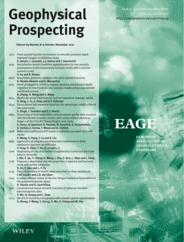-
oa Point‐spread function convolution to simulate prestack depth migrated images: A validation study
- Source: Geophysical Prospecting, Volume 69, Issue 8-9, Oct 2021, p. 1571 - 1590
-
- 05 Nov 2020
- 21 Jun 2021
- 06 Aug 2021
Abstract
Seismic migration commonly yields an incomplete reconstruction of the Earth model due to restricted survey aperture, band‐limited frequency content and propagation effects. This affects both illumination and resolution of the structures of interest. Through the application of spatial convolution operators commonly referred to as point‐spread functions, simulated prestack depth‐migrated images incorporating these effects may be obtained. Such simulated images are tailored for analysing distortion effects and enhance our understanding of seismic imaging and subsequent interpretation. Target‐oriented point‐spread functions may be obtained through a variety of waveform and ray‐based approaches. Waveform approaches are generally more robust, but the computational cost involved may be prohibitive. Ray‐based approaches, on the other hand, allow for efficient and flexible sensitivity studies at a low computational cost, but inherent limitations may lead to less accuracy. To yield more insight into the similarities and differences between point‐spread functions obtained via these two approaches, we first derive analytical expressions of both wave‐ and ray‐based point‐spread functions in homogeneous media. By considering single‐point scatterers embedded in a uniform velocity field, we demonstrate the conditions under which the derived equations diverge. The accuracy of wave‐based and ray‐based point‐spread functions is further assessed and validated at selected targets in a subsection of the complex BP Statics Benchmark model. We also compare our simulated prestack depth migrated images with the output obtained from an actual prestack depth migration (reverse time migration). Our results reveal that both the wave‐ and ray‐based approaches accurately model illumination, resolution and amplitude effects observed in the reverse time‐migrated image. Furthermore, although some minor deviations between the wave‐based and ray‐based approaches are observed, the overall results indicate that both approaches can be used also for complex models.




